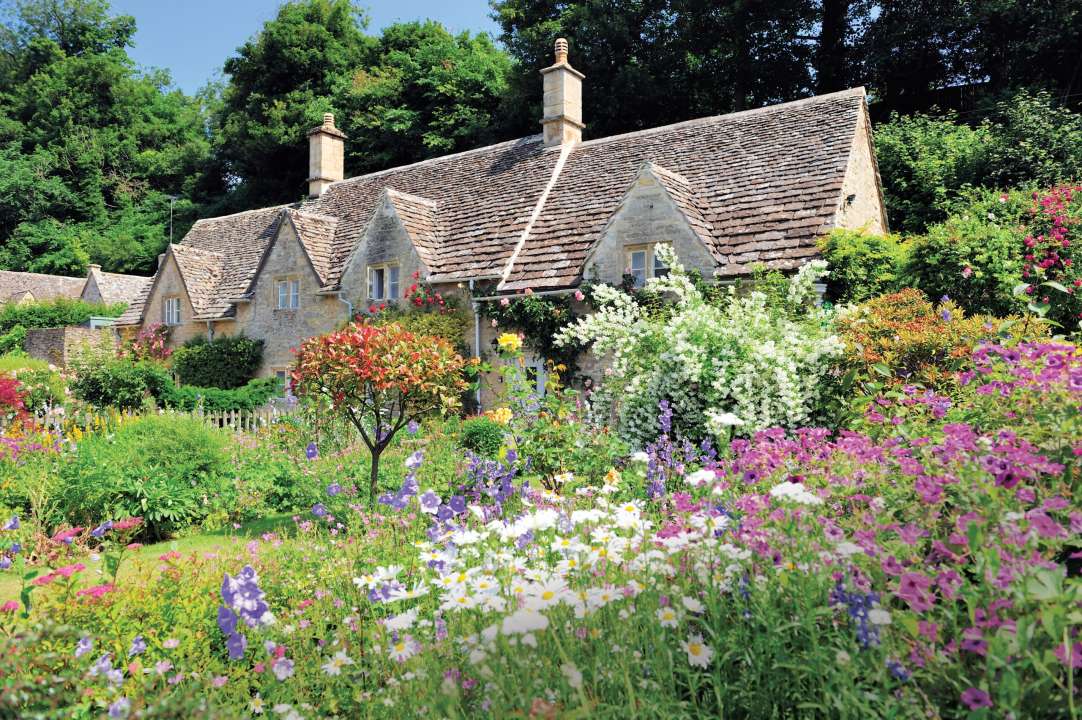Growing a cottage garden with Greg
General Manager of Skylark.
Growing a cottage garden will bring life to a garden not just from the joy it brings but from the abundance of wildlife a cottage garden entices to feed on its blooms. Cottage gardens are haphazard and packed full of plants and grow bigger and more voluptuous year after year.
Most plants you will put into a cottage garden will self-seed after their first flowers have died and seed heads pop and scatter new baby plants all around. This adds to the magic and wonder of a cottage garden because after year 1 and 2 you will be finding plants in places you never originally planted them.

If you want to create a cottage garden there are some simple steps to follow when you first begin to create your garden
- If you are selecting certain parts of your garden, it’s wise to bear in mind most cottage garden plants do best in Sunny spots with at least 6-8 hours of sunshine a day.
- A well-prepared planting bed will do wonders for all your plants months after your plants have got established, mix in some good mature manure into the soil before planting to encourage plants to take root and burst into life.
- Think about adding paths and focal points. Cottage garden plants are big and bold and will break up straight path edges with their flowing leaves and blousy flowers. Add an arch to grow sweet peas over best to get structures in place before starting the planting.
- When you are ready to plant start at the back of beds with the tallest plants working towards the edges of paths and fronts of beds with the lower growing plants.
- Remember you don’t need to fill every gap with a plant. Plants like Foxgloves, delphiniums, and Hollyhocks with self-seed an do the gap filling for you.
- Once the planting has been done remember to water everything in well and during dry periods give everything a good drink. Mulching of a cottage garden is a great idea to supress weeds and retain moisture.
- As your cottage garden grows some plants will need support like sweetpeas, climbing roses and clematis. If your garden is prone to being windy then its also a good idea to support taller perennials like delphiniums and hollyhocks especially when the plant is establishing itself.
- As plants grow and flowers fade remember to dead head and remove the old flowers, this will encourage more flowers and more growth.
- Now just sit back and relax, enjoy the relaxed atmosphere a cottage garden can bring and the buzz of the wildlife feeding on your efforts.
These are some cottage garden plants I would recommend for any garden.
- Foxgloves
- A classic cottage garden plants which will grow tall with spires full of colour all summer long and bees go nuts for them. Great self-seeders and masses of colour and variations available
- Delphiniums
- Again, a classic for any cottage garden which bright colourful flowers which when pruned will just keep coming and coming.
- Lavender
- Lavenders are a fantastic plant not just for their dainty mainly purple-coloured flowers but for their very fragrant scent and as an added bonus grow varieties like Lavender Hidcote or Munstead and use in cooking. Both are great British varieties and again like foxgloves will attract lots of wildlife.
- Roses
- Keeping with the fragrance theme roses are fantastic for growing in your garden, giving you summer long blooms and wonderful sweets scents from there flowers. Some of the best scented roses are good old English rose like Harlow Carr, Rambling Rector and Golden celebrations.
The list of Cottage Garden plants is extensive, and any Good Garden centre will have a range all year-round ready to be planted. If planting early in the year around February and March, I’d recommend buying plants in a 1L pot as they will have time to get there roots down and get ready for the summer to give you a good show. If you buy from April onwards look out for bigger versions in a 2/3L pot. These plants will already be established in their pot and will give a great show in the summer.
Remember there is no right or wrong way to plant a cottage garden and it can be as messy or as planned as you want it to be, Have fun and experiment. You can always dig up a plant in the wrong place and plant it somewhere else. But most of all enjoy the garden you have created.
